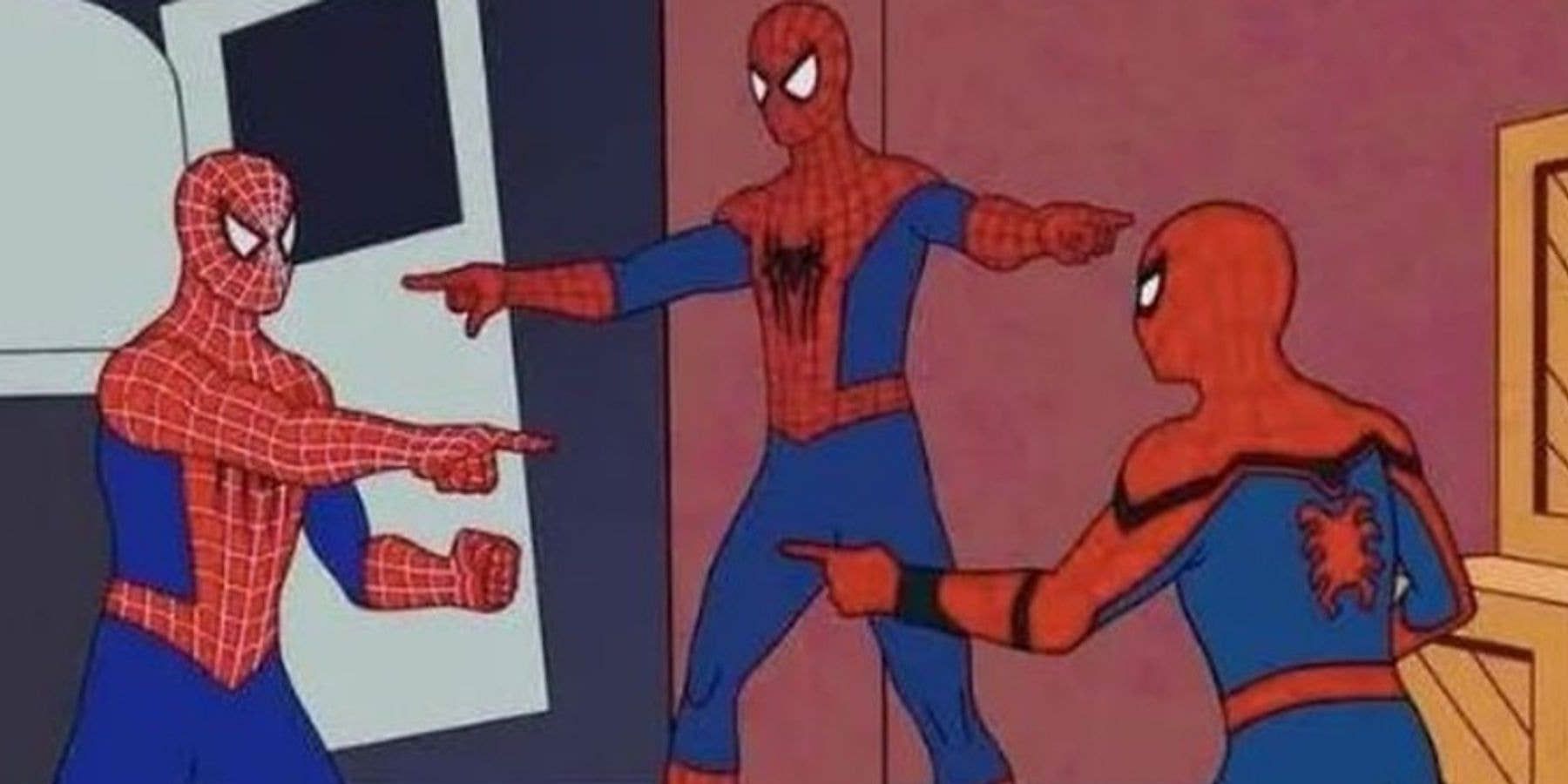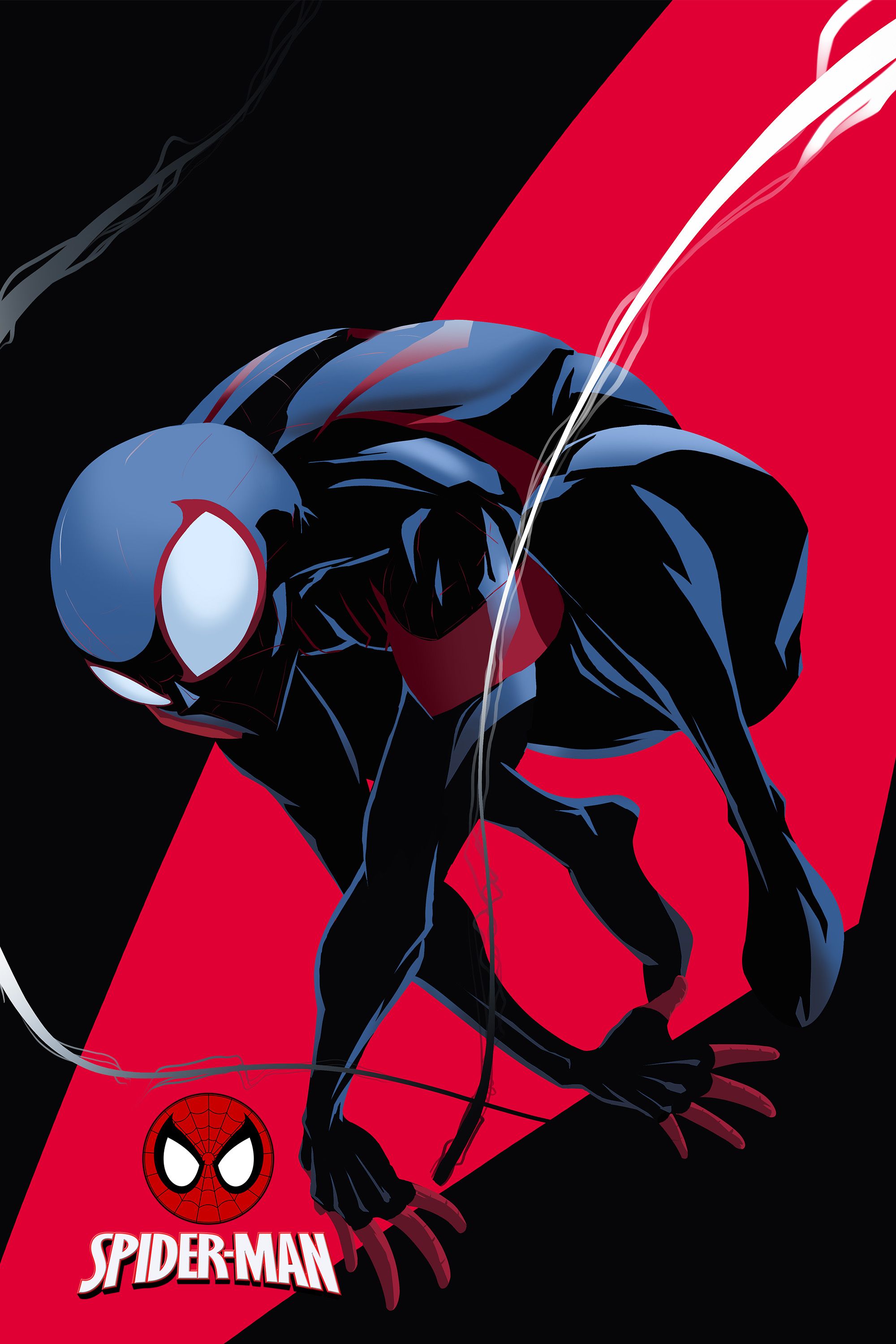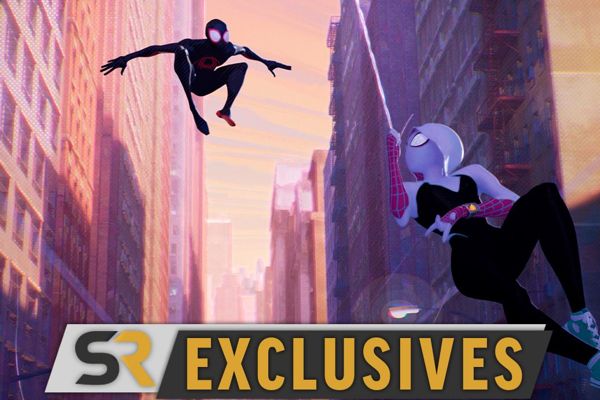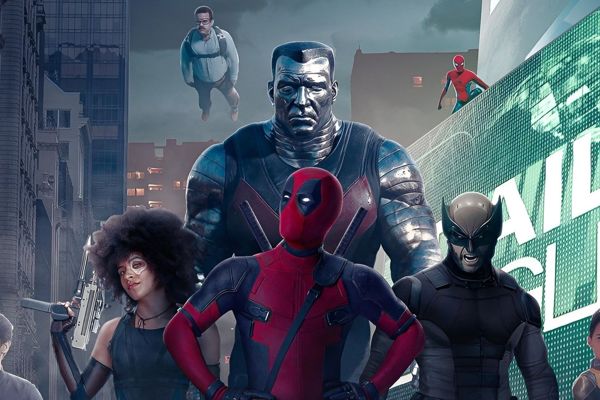
The Evolution of the Spider-Man Pointing Meme

The Spider-Man pointing meme, widely recognized and beloved, has recently gained popularity within official media Discover the intriguing origins of this meme and explore its various notable appearances across different platforms
Article Key Points
The Spider-Man pointing meme has managed to remain popular and relevant for a long time, despite most memes losing their charm quickly.
The original image used in the meme is from a 1967 episode of the Spider-Man cartoon series, where two Spider-Men accuse each other of being impostors. Since 2011, the meme has been extensively utilized to ridicule individuals or groups who profess to be unique but behave similarly. The meme has gained even more popularity due to its inclusion in recent Spider-Man films.
Memes typically have a short lifespan, with decreasing longevity as time goes on. While they once had enough impact to appear on merchandise, nowadays, they often fade into irrelevance within a month. That's what makes the Spider-Man pointing meme impressive—it has managed to stay in the public's consciousness for a significant period.
Not only has the pointing Spider-Man meme endured, but it has also remained extremely popular. It has transcended its internet origins and made appearances in official Spider-Man media. Surprisingly, despite its widespread popularity, people don't seem to tire of it. Usually, when a meme reaches this level of fame, it loses its charm, but pointing Spider-Man continues to be beloved, no matter how many times it's seen.
The Origin of the Spider-Man Meme
The original image used in the Spider-Man pointing meme is sourced from the nineteenth episode of the 1967 cartoon series titled "Double Identity." In this episode, J. Jonah Jameson orchestrates an art exchange to lure Spider-Man into captivity. However, as Spider-Man begins stealing the artwork, he is interrupted by the appearance of another Spider-Man. The two masked individuals point accusingly at each other, resulting in the iconic shot as they dispute their real identities. Jameson demands the arrest of both individuals, while the authentic Spider-Man proposes a face-off to determine the impostor. Engaging in combat, they showcase their similar web-slinging powers. Spider-Man hurls the impostor off the roof, angering Jameson, who believes both heroes are escaping. Ultimately, Spider-Man emerges triumphant, apprehending the imposter and handing him over to the police before making his departure. Removing the imposter's mask, a police officer identifies him as a criminal actor who utilizes his theatrical skills for impersonation.
Where The Spider-Man Meme Has Been Used
The campy and silly nature of the scene is just as anticipated in a 60's show. Moreover, it is slightly perplexing as the imposter criminal appears to be powerless and can only imitate the appearances of others, making it a mystery how he managed to possess Spider-Man's powers temporarily. It is possible that his acting skills are just that remarkable. Regardless, the specific details of the scene are not of great importance. What truly mattered was the comedic value derived from two identical figures pointing accusingly at each other.
The screenshot originally started circulating as a meme in 2011, accompanied by captions like "No U" and "Ha! Look at that loser." The meme quickly gained popularity and took on more specific meanings. It was often used to mock individuals or groups who behaved similarly while claiming to be different. The meme remained popular over the years because it was not typically annoying, had an easily understandable punchline, and featured Spider-Man.
Recently, the meme has gained renewed attention due to its connection to the three most recent Spider-Man films. The first film to reference the meme was 2018's Spider-Man: Into the Spiderverse. In a post-credit scene, the character Miguel O'Hara, also known as Spider-Man 2099, is introduced. Although Miguel becomes one of the antagonists in the sequel, the first film only presents a glimpse of him. In a serious tone, Miguel travels through the multiverse with a serious purpose, but the tone suddenly shifts to comedy when he enters the world of the 60's cartoon. He comes face to face with the Spider-Man from that reality, and both characters recreate the iconic accusatory pointing scene from the original episode, but in a comically exaggerated manner.
In 2021, Spider-Man: No Way Home made history as the first live-action film to acknowledge the meme. Tobey Maguire, Andrew Garfield, and Tom Holland, all portraying versions of Peter Parker, teamed up and worked diligently in their lab. Whenever someone called out the name 'Peter,' all three would simultaneously look up, pointing at each other, inquiring about the specific Peter being referred to. Additionally, the three actors playfully reenacted the iconic meme, this time while donning their respective Spider-Man costumes for an on-set picture.
More recently, Spider-Man: Across the Spiderverse ingeniously incorporated the meme into its plot. As Miles Morales attempted to escape, Miguel O'Hara mistakenly issued a command to all the heroes in the Spider-Society to apprehend Spider-Man. However, this instruction backfired because the entire city filled with Spider-Men halted and instinctively pointed at one another, confused as to which Spider-Man should be stopped. This particular reference to the pointing meme is exceptionally imaginative. Given the ongoing popularity and enjoyment that fans still derive from it, it is likely that future Spider-Man media will continue to employ this meme for the foreseeable future.
Spider-Man
Spider-Man holds a prominent position in the world of entertainment today. Originally introduced in the Marvel comic Amazing Fantasy #15, this beloved superhero has emerged as a significant character within the Marvel comic-book universe. Furthermore, Spider-Man has left a lasting impact through his appearances in numerous films and an extensive collection of video games. Notably, Insomniac Games' Spider-Man (2018) and Spider-Man: Miles Morales have garnered immense attention and praise.
Editor's P/S
The Spider-Man pointing meme is a classic example of how a simple image can be transformed into a powerful and enduring cultural icon. The meme, which features two Spider-Men pointing at each other, has been around for over a decade and has been used to express a wide range of emotions and ideas.
I have always been a fan of the Spider-Man pointing meme, and I think it's popularity is due to its versatility. The meme can be used to express anything from amusement to disbelief, and it can be easily adapted to fit any situation. I also appreciate the meme's simplicity. It's a simple image that doesn't require a lot of explanation, and it can be understood by people of all ages and cultures.















